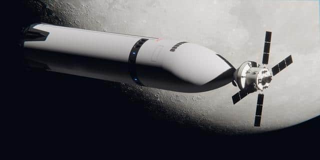NASA will abandon the SLS rocket and Orion spacecraft for its lunar program.
The transitional team of managers, who familiarized themselves with the affairs of the National Aeronautics and Space Administration (NASA) of the United States, has begun preparing draft orders that will come into effect after January 20, 2025, when the Trump administration assumes power. Information about their plans was published by the publication Ars Technica. In the article, Eric Berger, a well-known industry observer, noted that these plans are not yet in their final stage, but they reflect the general intentions of the new American leadership.
Key points: the closure of the Space Launch System (SLS) super-heavy rocket program and the Orion spacecraft. If these plans are realized, it would represent a truly revolutionary change. For many years, this rocket and spacecraft have been at the center of all R&D efforts of the American space agency. The projects were estimated at $40 billion, and a single launch of the Orion spacecraft on the SLS rocket cost over $4 billion. The stated costs indicate that the management quality of both projects has been poor. Therefore, it is not surprising that they have faced serious technical issues.
For instance, after an unmanned test flight to the Moon, Orion returned to Earth with unplanned cracks in its heat shield. Ideally, the heat shield should be improved after this, followed by another test of the spacecraft. However, due to the cost of the test flight (approximately 20% of NASA's annual budget), this was not feasible. Sending people to the Moon without successful preliminary tests also seemed like a questionable idea: this was not done even during the first lunar race.
After January 20, 2025, billionaire Jared Isaacman will become the head of NASA, having commanded the first-ever private space crew that took place this summer. Isaacman shares views similar to those of Elon Musk, yet few expected him to decide to cancel the SLS and Orion programs. It is not just because tens of billions of dollars have already been invested in these programs. More importantly, influential congressmen-lobbyists back these projects, which is why the rocket is jokingly referred to as the Senate Launch System, and both projects are generally called “piñata” for corruptors/lobbyists.
New data has shown that Isaacman’s team aims for something unprecedented in the American political system — combating costly lobbying. Nothing like this has happened in the U.S. since von Braun. Additionally, a significant reduction in NASA's personnel and development centers is planned.

In line with these truly revolutionary intentions are other plans of the space agency under the new administration. They include sending humans to the Moon and Mars by 2028, which will require a rapid overhaul of the Artemis lunar program to fundamentally new hardware. It is evident that the plan involves using Starship HLS for all mission phases, rather than just for landing and taking off from the Moon, as previously planned.
However, the thesis of sending humans to Mars by 2028 is questionable. As is known, the flight plan for Starship to the fourth planet included producing fuel for the return journey directly on the Martian surface. This will require a power source (preferably nuclear) and a set of equipment for the Sabatier reaction (producing methane from carbon dioxide and water). Currently, no one on Earth has developed such technology. Its development will take many years, making a human landing on Mars feasible only in the 2030s.
At the same time, sending Starship to the Red Planet by 2028 is technically quite possible. However, it would be in unmanned mode — to practice “belly braking” in the Martian atmosphere to save fuel during braking. Ideally, it would also be beneficial to test the landing there without crew. The data obtained from such tests would be extremely valuable for preparing a crewed expedition in the 2030s.